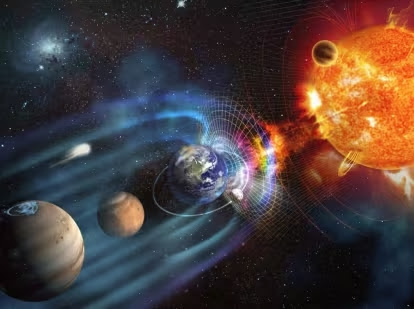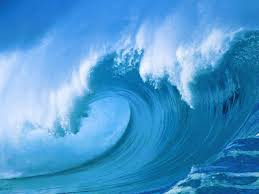GEOFÍSICA - PROSPECCIÓN GEOFÍSICA
Es natural que cuando estudiamos el subsuelo inyectando corriente, debemos medir con equipos especializados la diferencia de potencial entre los electrodos que estamos utilizando, para determinar nuestra resistividad aparente. Para poder determinar todo ésto, debemos de hacer uso de matemáticas y física elemental, lo cual el geofísico debe tener siempre presente a la hora de empezar un estudio geofísico utilizando cualquier método geoeléctrico.
Una de las consideraciones que debemos tener presente antes de inyectar corriente al terreno, es que tenemos que tener bien definida nuestras fórmulas físicas teóricas, la cual una de ellas corresponde a la ley de Ohm, ya que el método de resistividad eléctrica en corriente continua está regida por esta misma ley.
Entonces, ¿Qué determina la Ley de Ohm cuando un flujo de corriente eléctrica atraviesa las rocas o los sedimentos?
La Ley General de Ohm establece que la caída de potencial ΔV entre dos puntos por los que circula una corriente eléctrica de intensidad "I", es proporcional a ésta y a la resistencia "R" que ofrece el medio al pasaje de la corriente (1) como lo expresa la siguiente ecuación:
Las unidades de éstos valores corresponden a ohmios, voltios y amperios. Donde determinamos los voltios para la diferencia de potencial. Amperios la intensidad de corriente y ohmios para la resistencia.
¿Cómo se demuestra ésta ecuación?
Experimentalmente se demuestra, que la intensidad de corriente que atraviesa un cuerpo por unidad de sección es linealmente proporcional al gradiente del potencial (ΔV/Δl). Por tanto, para una sección cualquiera, será:
donde C, es la conductividad del material, la cual es una constante de proporcionalidad.
La Resistencia "R" que opone un cuerpo al paso de la corriente eléctrica es directamente proporcional a la longitud e inversamente proporcional a la sección. La constante de proporcionalidad lineal ρ (ro) es la resistividad, la cual es un parámetro característico de cada material.
despejando y reemplazando tenemos la definición de la ley de ohm.
En el caso de estudios de prospección eléctrica, como el caso de los Sondajes Eléctricos Verticales, y teniendo en consideración un medio isótropo podemos usar la Ley de Ohm para calcular la resistencia, a lo que lo multiplicamos por el factor geométrico del dispositivo tetraelectródico. Ya que que estamos inyectando corriente al subsuelo a través de nuestros polos que hemos instalado en el suelo y a determinadas distancias de la fuente de inyección de corriente. Así mismo, podemos medir, la Intensidad de corriente que está arrojando el equipo, la resistencia que ofrece el terreno y su diferencia de potencial. De esta manera, podemos calcular con ayuda de nuestro factor geométrico la resistividad aparente por donde circula la corriente eléctrica en el subsuelo, para poder determinar el tipo de material que existe en determinadas profundidades de estudio.
REFERENCIAS BIBLIOGRÁFICAS
(1) http://tierra.rediris.es/hidrored/ebooks/miguel/ProspeccGeoelec.pdf
MATERIAL DE ESTUDIO/APOYO
 |
| Descárgalo (espera 5 seg. publicidad) |


























































